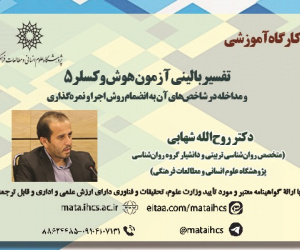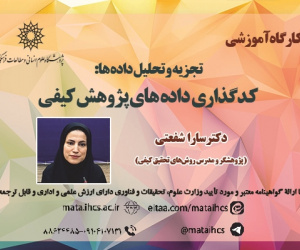نقش و عملکرد نشریات در سیاست های تجدد زنان ایران با تأکید بر مقوله پوشش و مد (1310 تا 1320ه.ش) (مقاله علمی وزارت علوم)
درجه علمی: نشریه علمی (وزارت علوم)
آرشیو
چکیده
یکی از برنامه های اصلی اصلاحات اجتماعی حکومت پهلوی اول، تجدد جامعه زنان ایران بود. برای تحقق این مهم حکومت پهلوی در تلاش بود تا طیف وسیعی از زنان را به ویژه در دو مقوله پوشش و مدگرایی تشویق و ملزم به قرارگرفتن در مسیری کند که نتیجه آن تبدیل شدن به زن متجدد بود. در تحقق این مهم، نشریات دوره پهلوی اول به مثابه مهم ترین رسانه در دسترس جامعه نقش مهمی ایفا کردند. ایفای چنین نقشی از سوی نشریات عصر پهلوی اول به خصوص در سال های1310تا 1320 پیامدهایی به همراه داشت. بر این اساس این پژوهش درصدد است تا با رویکرد تاریخی و استفاده از نشریات و اسناد آرشیوی به طرح و پاسخ گوییِ این پرسش بپردازد که نقش و عملکرد نشریات در سیاست متجددانه زنان حکومت در سال های 1310تا 1320 با تأکید بر مقوله پوشش و مد چه بود و چه پیامدهایی را به همراه داشت؟ یافته های پژوهش نشان می دهد که نشریات ایران دوره پهلوی اول به خصوص طی سال های 1310 تا 1320، در چهارچوب نقشی که نشریات در نظام های سیاسی با الگوی حکمرانی مطلقه ایفا می کنند، ایفاگر نقش ترویجی و تبلیغی برای پیشبرد اهداف و برنامه های تجدد حکومت پهلوی در امور زنان شدند؛ این عملکرد و نقش بیشتر متمرکز بر تغییر وضعیت پوشش سنتی زنان بود که از یک سو با انتقاد از پوشش سنتی قدیم و از سوی دیگر با تبلیغ پوشاک و کالاهای زینتی جدید در روزنامه ها صورت می گرفت. پیامد چنین عملکردی را می توان در رواج پدیده مصرف گرایی زنان مشاهده کرد. نشانه های رواج پدیده مصرف گرایی را می توان در افزایش میزان واردات کالاهای مصرفی زنان در زمینه پوشاک، لوازم آرایشی و زینتی چون پارچه و لباس های دوخته شده، کلاه، عطر، ادکلن و ساعت مشاهده کرد که احصائیه تجارتی ایران در سال های 1310 تا 1319 حاکی از افزایش میران واردات این کالاهاست. افزایش واردات این کالاها نیز خود حاکی از افزایش میران مصرف و رواج مصرف گرایی در میان جامعه زنان ایران در سال های مورد بحث است.The Role and Consequences of Publications in the Modern Policies of Iranian Women with Emphasis on the Issue of Clothing and Fashion (1310-1320SH)
One of the main social reform programs of the first Pahlavi government was the modernization of Iranian women's society. To achieve this goal, the Pahlavi government was trying to encourage and require a wide range of women, especially in the two issues of clothing and fashion, to follow a path that would result in them becoming modern women. In achieving this goal, the publications of the early Pahlavi era played an important role as the most important media available to society. The role played by publications in the first Pahlavi era, especially in the years 1310-1320, had consequences. Accordingly, this research seeks to address and answer the question of what was the role and function of publications in the government's modern women's policy in the years 1931 to 1941, with an emphasis on the issue of clothing and fashion, and what consequences did it bring, using a historical approach and the use of publications and archival documents. The research findings show that Iranian publications during the first Pahlavi period, especially during the years 1931 to 1941, within the framework of the role that publications function in political systems with an absolute governance model, played a promotional and propaganda role to advance the goals and programs of modernization of the Pahlavi government in women's affairs; this function and role was more focused on changing the women's traditional clothing, which was done on the one hand by criticizing the old traditional clothing and on the other hand by advertising new clothing and New ornaments in newspapers. The consequence of such a function can be seen in the prevalence of female consumerism. Signs of the prevalence of consumerism can be seen in the increase in the import of women's consumer goods in the field of clothing, cosmetics and accessories, such as fabrics and sewn clothes, hats, perfumes, colognes and watches, and Iran's trade statistics for the years 1931 to 1938 indicate an increase in the import rate of these goods. The increase in imports of these goods also indicates an increase in consumption rates and the prevalence of consumerism among Iranian women in the years under discussion.







